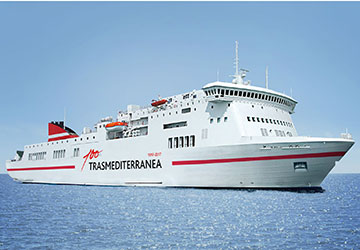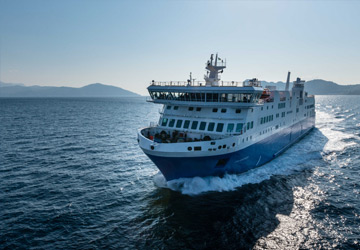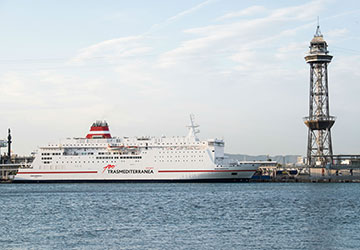
-
Recent Searches
Recent Searches
- Travel Alerts
- My Account
- Customer Service
-
United Kingdom
Santa Cruz de Tenerife to Santa Cruz de La Palma Ferry
The Santa Cruz de Tenerife Santa Cruz de La Palma ferry route connects Tenerife with La Palma. Currently there is just the 1 ferry company operating this ferry service, Trasmediterranea. The crossing operates up to 1 times each week with sailing durations from around 8 hours 1 minute.
Santa Cruz de Tenerife Santa Cruz de La Palma sailing durations and frequency may vary from season to season so we’d advise doing a live check to get the most up to date information.
Santa Cruz de Tenerife - Santa Cruz de La Palma Ferry Operators
-
- 1 Sailing Weekly 8 hr 1 min
- Get price
Average Santa Cruz de Tenerife Santa Cruz de La Palma Prices
Prices shown represent the average one way price paid by our customers. The most common booking on the Santa Cruz de Tenerife Santa Cruz de La Palma route is a car and 2 passengers.
Santa Cruz de Tenerife Guide
Located on the Spanish island of Tenerife, one of the Canary Islands, the city of Santa Cruz de Tenerife is the joint capital of the Canary Islands, along with Las Palmas. The city is usually just called Santa Cruz and is located in the north east of Tenerife, around 210 km off the north western coast of Africa. Located in the city is the Parliament of the Canary Islands, the Canarian Ministry of the Presidency, which is shared on a 4 year term with Las Palmas, half of the Ministries and Boards of the Canarian Government (the other half is in Gran Canaria), the Tenerife Provincial Courts and two courts of the Superior Court of Justice of the Canary Islands.
The city's port plays an important role in trade between Europe, Africa and the Americas. The city is the focus for domestic and inter-island communications in the Canary Islands. Ferry services from the port depart to mainland Spain, the rest of the Canary Islands and beyond.
Santa Cruz de La Palma Guide
Santa Cruz de La Palma is located on the Canary Island of La Palma is a beautiful colonial style Spanish city whose historic quarter, which has been declared a Historic-Artistic Site, has a number of palaces, colonial style buildings and houses that contain elements of typical canary Islands architecture. The city can trace its history back to the latter part of the 15th century when Alonso Fernandez de Lugo captured the island and made it the possession of the Crown of Castile, and from then on it began to gain economic power. Popular attractions in the city include a number of churches and the Shrine of Virgen de las Nieves and is where a centuries old tradition takes place: the descent of the island's patron saint. The famous Calle Real street has been declared a Property of Cultural Interest and a Historic-Artistic Site and is the city's main street. It is mainly cobbled and is the location of the main shops, squares, houses and interesting buildings.
From the city's port, ferry services operate to Cadiz on the Spanish mainland, Tenerife, Gran Canaria and Lanzarote.





